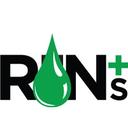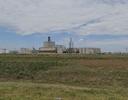Hero BX Process Technology and Plant Optimization

January 2, 2014
BY John Nies
The process of making biodiesel is relatively simple: triglycerides are combined with an alcohol to form glycerin and methyl esters. Multiple processes and technologies can be used to make high-quality biodiesel, including: pretreating feedstock versus acid esterifying, washing the biodiesel to eliminate excess catalyst and glycerin, and distillation or cold-haze filtration to strip out other impurities. The goal of any successful biodiesel plant is to make the highest quality biodiesel in the most efficient way possible. Hero BX has combined Desmet Ballestra and Arisdyne technologies, along with a modified filtration system, in an attempt to increase plant capacity, optimize efficiencies and improve the quality of our final product.
In order to exceed the original Desmet Ballestra designed capacity of 45 MMgy, a series of bottlenecks had to be corrected, including speeding up the reaction time. Arisdyne technology was added to the initial reaction step of the process in order to increase the plant’s flow rate. This allowed Hero BX to accelerate reaction time but created bottlenecks in the washing steps of the process. These issues were corrected by finding more efficient ways to use existing resources and by adding minimal new equipment to allow the plant to run faster. These upgrades in combination with Desmet Ballestra and Arisdyne technologies have increased the plant’s capacity by approximately 10 percent. Hero BX is also installing additional equipment to further increase capacity in 2014. One major improvement is the addition of a larger methanol column, which will help support a new acid esterification system as well as support any other new equipment in the future.
After increasing plant capacity, Hero BX was able to focus on optimizing plant efficiencies to lower production costs per gallon. The first step was to increase capacity to spread fixed costs over more gallons. Additionally, multiple economizers were added throughout the process and catalyst usage was minimized, due to the Arisdyne equipment. Other ways Hero BX has developed a continuous-improvement approach to plant optimization include implementing steam trap surveys, monitoring nitrogen gas usage, constantly observing process control points, and improving wastewater oil recovery. These are just a few examples of efforts in place to optimize plant efficiencies and reduce costs to help improve the bottom line.
Combining all of these technologies would not be worthwhile if the finished product were not high quality. In order to keep a strong customer base, quality is one area that can never be ignored in the interest of shipping higher volumes. The Arisdyne technology has helped to ensure a more complete reaction, which has allowed Hero BX to adhere to a stricter internal spec on monoglycerides than what is required for ASTM. Another area that affects quality is the filtration process. In order to maintain the highest possible quality, Hero BX has made multiple improvements to its haze filtration system. As capacity grew, larger filters had to be installed to keep up. A great deal of research was done with multiple filter aids to find what worked best for both filterability in the process as well as producing high-quality biodiesel. In the end, Hero BX was able to lower the amount of filter aid needed as well as lower the average cold soak filtration times by about 50 seconds.
Advertisement
Advertisement
Process technologies will continue to improve in the biodiesel industry. Whether it is increasing plant capacity, optimizing plant efficiencies, or improving the quality of the finished product, the companies that are able to successfully implement these new technologies into their existing facilities are the ones that are going to thrive in the biodiesel industry. At Hero BX our goal is to work to continuously improve our facility in all areas and attempt to stay one step ahead, in order not to be left behind.
Author: John Nies
Director of Procurement & Logistics, Hero BX
814-528-9210
jnies@herobx.com
Advertisement
Advertisement
Related Stories
Biodiesel capacity in the U.S. and Canada dipped slightly stable in 2024, with several renewable diesel producers reporting headwinds and lower margins alongside a drove of SAF projects in various stages of development.
The IEA’s Task 39 group has new research regarding the development and status of the sustainable aviation fuel industry.
The U.S. EPA on Nov. 16 released updated RIN data, reporting that nearly 2.11 billion RINs were generated under the RFS in October, up from 1.81 billion generated during the same month of last year.
Conestoga to host SAFFiRE cellulosic ethanol pilot plant
Conestoga Energy and SAFFiRE Renewables LLC announced on Nov. 16 their agreement for Conestoga to host SAFFiRE’s cellulosic ethanol pilot plant at Conestoga’s Arkalon Energy ethanol facility in Liberal, Kansas.
Officials at Calumet Specialty Products Partners L.P. discussed the company’s proposed plans to boost sustainable aviation fuel (SAF) production at its Montana Renewables biorefinery during third quarter earnings call, held Nov. 9.
Upcoming Events










